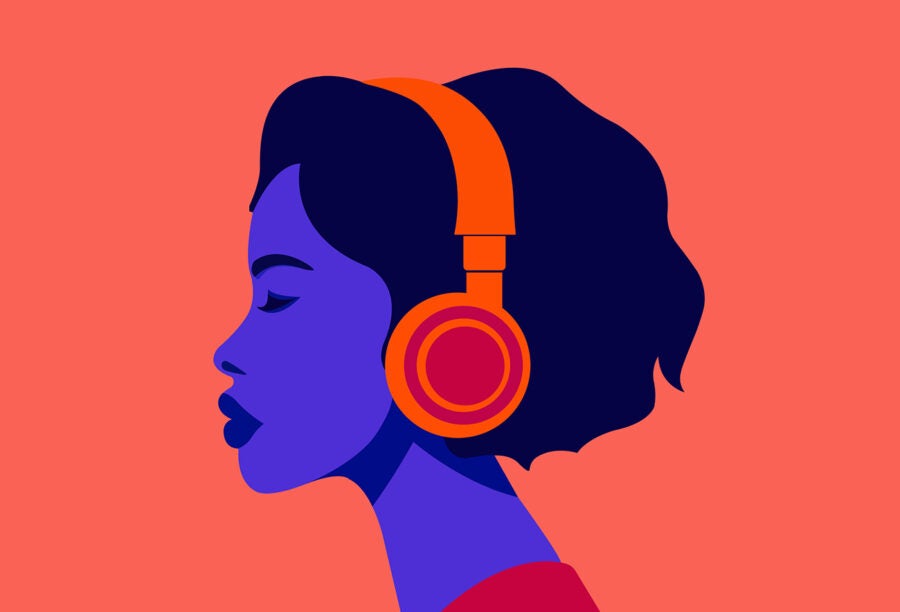When 19th-century poet Henry Wadsworth Longfellow wrote that music was “the universal language,” he hadn’t heard “Blurred Lines,” a song so misogynistic that it’s still controversial more than a decade after it climbed to the top of the Billboard charts.
Music has always been an expression of culture. But unlike the classical tunes of Longfellow’s day, modern music often has been criticized for lyrics that are sexist, derisive, and demeaning to women. Whether rock, pop, rap, or country, few genres have spared women from being the object of aggression.
In his study, “Quantifying Cultural Change: Gender Bias in Music,” Wharton marketing professor Jonah Berger used machine learning to answer the question: Has modern music become less misogynistic over time?
Berger and co-author Reihane Boghrati, information systems professor at Arizona State University’s W.P. Carey School of Business, analyzed more than 250,000 songs spanning 50 years and six genres — pop, rock, country, rap, dance, and R&B. They found improvement up until the mid-1990s, and then a leveling off or reversal. Male artists were mostly responsible for the downshift, because female artists were less biased to begin with.
“Culture is a self-reinforcing system.”— Jonah Berger
“While things have certainly improved over the last 50 years, they haven’t become neutral,” Berger said. “Lyrics are still biased against women.”
It’s hard to pinpoint a single reason for the decline in bias, although Berger attributes it in part to changing cultural values and perceptions. Musicians today risk backlash for songs filled with derogatory lyrics, no matter how catchy. Pharrell Williams, who co-wrote and sang on “Blurred Lines,” later said the controversy educated him about chauvinism and that he “didn’t realize that some of my songs catered to that.”
Music as a Measure of Culture
Berger, who’s an expert on social influence and how language shapes behavior, said music is an important measure of culture because of its prevalence. It’s a shared experience that influences the audience, much like popular books and movies.
“People sing along to lyrics without thinking about what they are saying,” he said. “Even though we may not realize it, the ideas, associations, and content that is reinforced in music shapes the next generation and what society thinks moving forward.”
Bias in lyrics can shape behavior in the same way as language in other forms of communication, the professor said. In business, that could be advertising and marketing materials, or hiring and training materials. For example, if managers are always referred to as male, people unconsciously associate leadership roles with men. Similarly, a 2022 paper found that hiring female CEOs and board members changes organizational language so that the words used to describe women become similar to words that describe agency, such as “independent” and “confident.”
“Culture is a self-reinforcing system,” Berger said. “Both as producers of language and consumers of language, the more we are aware of these biases and try to correct them, the more we can make a more equitable future.”
“The good news is it has gotten better; the bad news is there is still work to do.”— Jonah Berger
Measuring Gender Bias with AI
There have been previous studies on gender bias in music, but they have been limited in scope. Older research looked at a small number of songs, a single genre, or an isolated time period that doesn’t establish long-term trends. And the data had to be manually coded.
Berger has conducted many studies using automated textual analysis, which allows data to be objectively analyzed at scale, so he knew it would be a perfect tool to parse information from a quarter-million songs. But the professors faced another challenge in deciding how to measure bias. Some song lyrics are explicitly violent against women, but most are subtle or open to interpretation.
They decided to focus on whether, compared to men, women are talked about as competent and intelligent or merely warm or kind.
“These subtle linguistic choices have pernicious impacts,” Berger said. “Sure, being nice, warm, and kind are all good things. But when making important decisions, like who to hire or give raise, competence often matters more than warmth.”
When it comes to the pervasiveness of sexism, there is plenty of blame to go around. Berger noted previous research that found protagonists in children’s books tend to be male, while female characters tend to be more passive. He also mentioned a study that found roughly 70% of questions posed to female tennis players weren’t about the sport, like when Serena Williams was asked in 2015 why she wasn’t smiling. Berger writes about similar forms of bias in his most recent book, “Magic Words: What to Say to Get Your Way.”
“Music isn’t the only place where there is still bias,” he said. “Given how these biases exist in other domains, what we found is not surprising. The good news is it has gotten better; the bad news is there is still work to do.”



